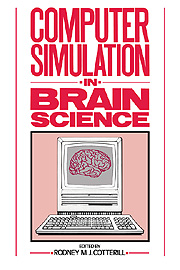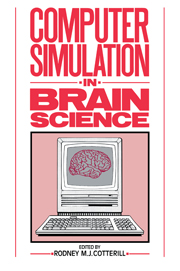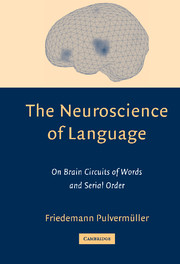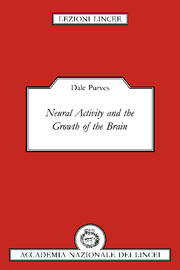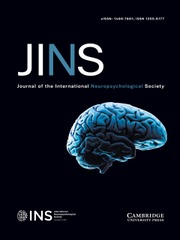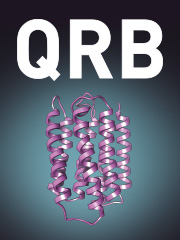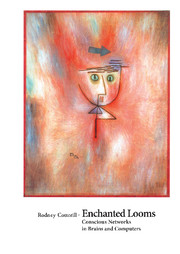Models of Brain Function
This is an exciting time for brain science. Recent progress has been such that it now seems realistic to look towards an explanation of mind in terms of the brain's anatomy and physiology. This advance has been made possible by gains on several research fronts, but it had been due even more to the way in which different neural disciplines have interacted with one another. Models based on artificially symmetrical arrays of idealized neurons are now being superseded by ones which properly take into account the brain's actual circuitry. This book presents a comprehensive overview of the current state of brain modelling, containing contributions from many leading researchers in this field. It will be of interest not only to researchers in the fields of brain science and neurobiology, but also to psychologists and those involved in the study of artificial intelligence.
Product details
February 1990Hardback
9780521385039
590 pages
234 × 152 × 38 mm
0.976kg
Unavailable - out of print March 2010
Table of Contents
- List of contributors
- Preface
- 1. Can memory be the brain's Rosetta Stone? S. P. R. Rose
- 2. Functions of neuronal networks in the hippocampus and cerebral cortex in memory E. T. Rolls
- 3. Conscious subjective experience vs. unconscious mental functions: a theory of the cerebral processes involved B. Libet
- 4. A parallel vision machine that learns T. Poggio
- 5. Colour algorithms for image segmentation A. Hurlbert
- 6. Physiological constraints on models of visual cortical function D. A. Pollen, J. P. Gaska and L. D. Jacobson
- 7. A model of preattentive region definition based on texture analysis M. Pabst, H. J. Reitboeck and R. Eckhorn
- 8. Analysis of complex motion signals in the brain of cats and monkeys G. A. Orban, L. Lagae, S. Raiguel, B. Gulyas and H. Maes
- 9. A simplifying strategy for modelling the retino-cortical pathway R. Maex and G. A. Orban
- 10. Towards a network theory of cortical areas H. A. Mallott and R. Brittinger
- 11. The primary visual system: an attempt to understand the function of its structure S. S. Christensen, R. M. J. Cotterill, C. Nielson and H. Thovtrup
- 12. The geometry of the striate topographic map: functional implications A. Johnston
- 13. A model of early vertebrate visual processing J. G. Taylor
- 14. A neural network for feature linking via synchronous activity: results from cat visual cortex and from simulations R. Eckhorn, H. J. Reitboeck, M. Arndt and P. Dicke
- 15. Cortical architecture and oscillations in neuronal networks: feedback versus local coupling D. Kammen, P. J. Holmes and C. Koch
- 16. The role of accurate timing in human performance and the code for higher cortical function L. Brothers and G. L. Shaw
- 17. Neural circuits and mechanisms for visually guided eye movements in primates R. Eckmiller
- 18. Cooperative control of limb movements by the motor cortex, brainstem and cerebellum J. C. Houk
- 19. Analog simulation of circuits in the olfactory bulb J. W. Clark, J. Chen and K. E. Kurten
- 20. Simulations of tactile spatial discrimination D. Todorovic
- 21. Chaos- and alpha-preparation in brain function E. Basar, C. Basar-Eroglu, J. Roschke and J. Schult
- 22. Biomagnetic measurements of fetal brain activity P. Anastasiadis, P. A. Anninos and E. Sivridis
- 23. A brain model theory for epilepsy and its treatment: experimental verification using Sqiud measurements P. A. Anninos, N. Tsagas and A. Adamopoulos
- 24. A temporal extension of the four frames model J. A. Feldman
- 25. The collective brain B. A. Huberman
- 26. Neural geometry: towards a fractal model of neurons A. Pellionisz
- 27. Towards a hardware realisable model of the neuron D. Gorse and J. G. Taylor
- 28. Poly-contextural modelling of heterarchies in brain functions R. Kaehr and E. Von Goldammer
- 29. Linear Boolean nets synthesizable in polynomial time E. R. Caiaiello, M. Marinaro and R. Tagliaferri
- 30. Chaotic threshold neurons analysed by Boolean cellular automata rules K. E. Kurten
- 31. Learning and architectures of neural networks P. Rujan
- 32. Structural realization of a Hebb-type learning rule I. E. Dammasch
- 33. A neural network that stores and retrieves ambiguous information like the brain Y. Salu
- 34. Handwriting control: a functional model R. Plamondon.


